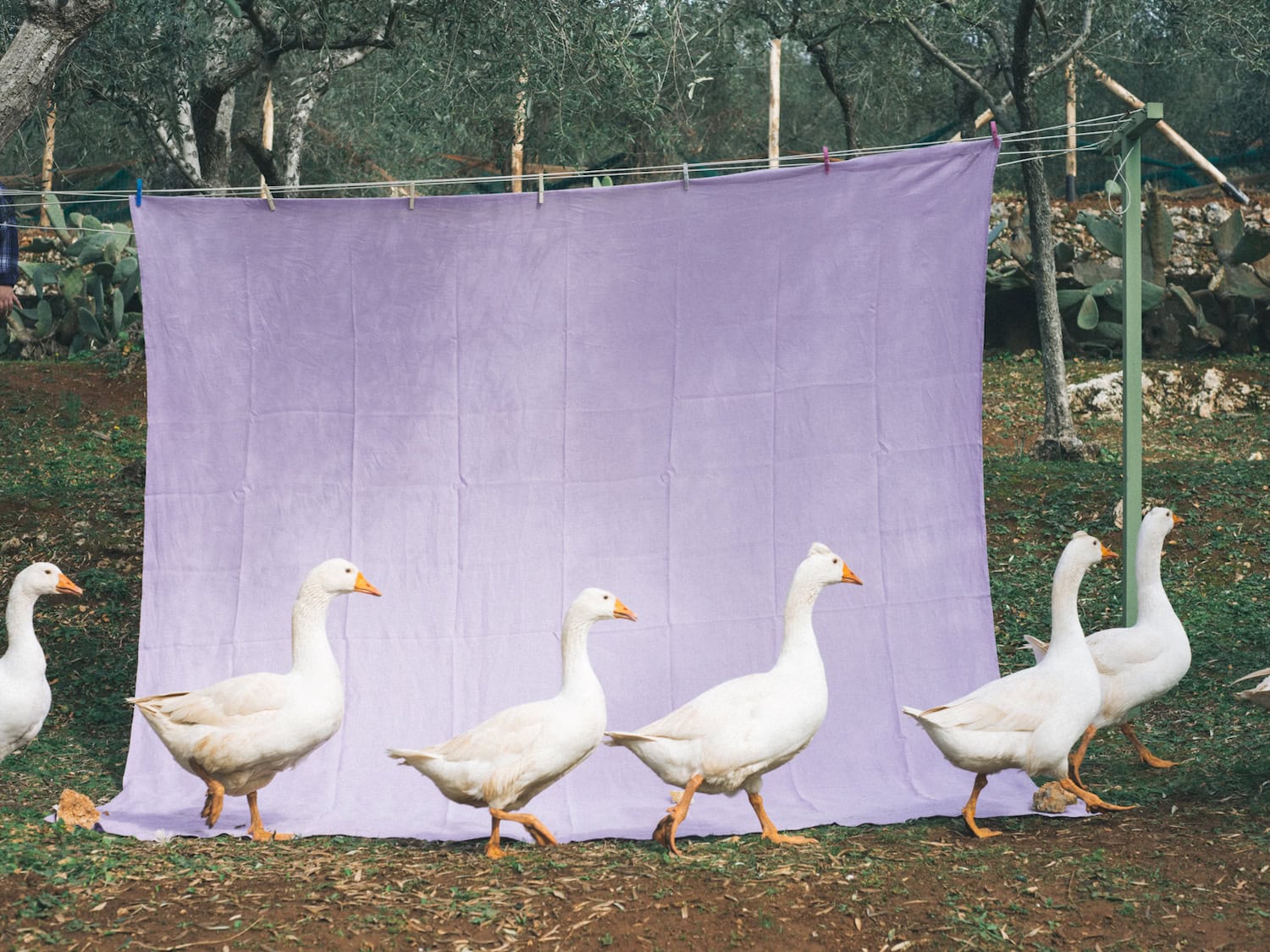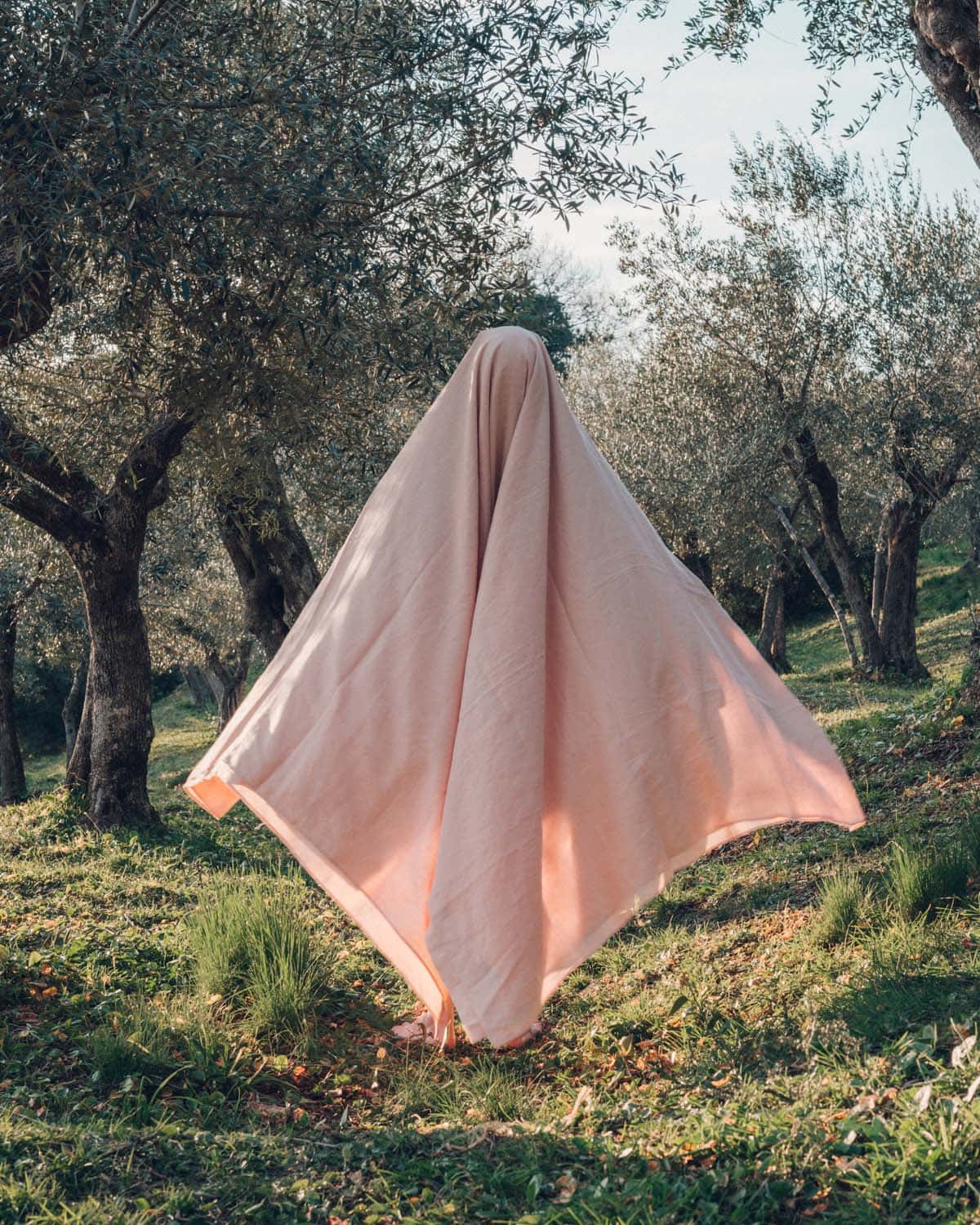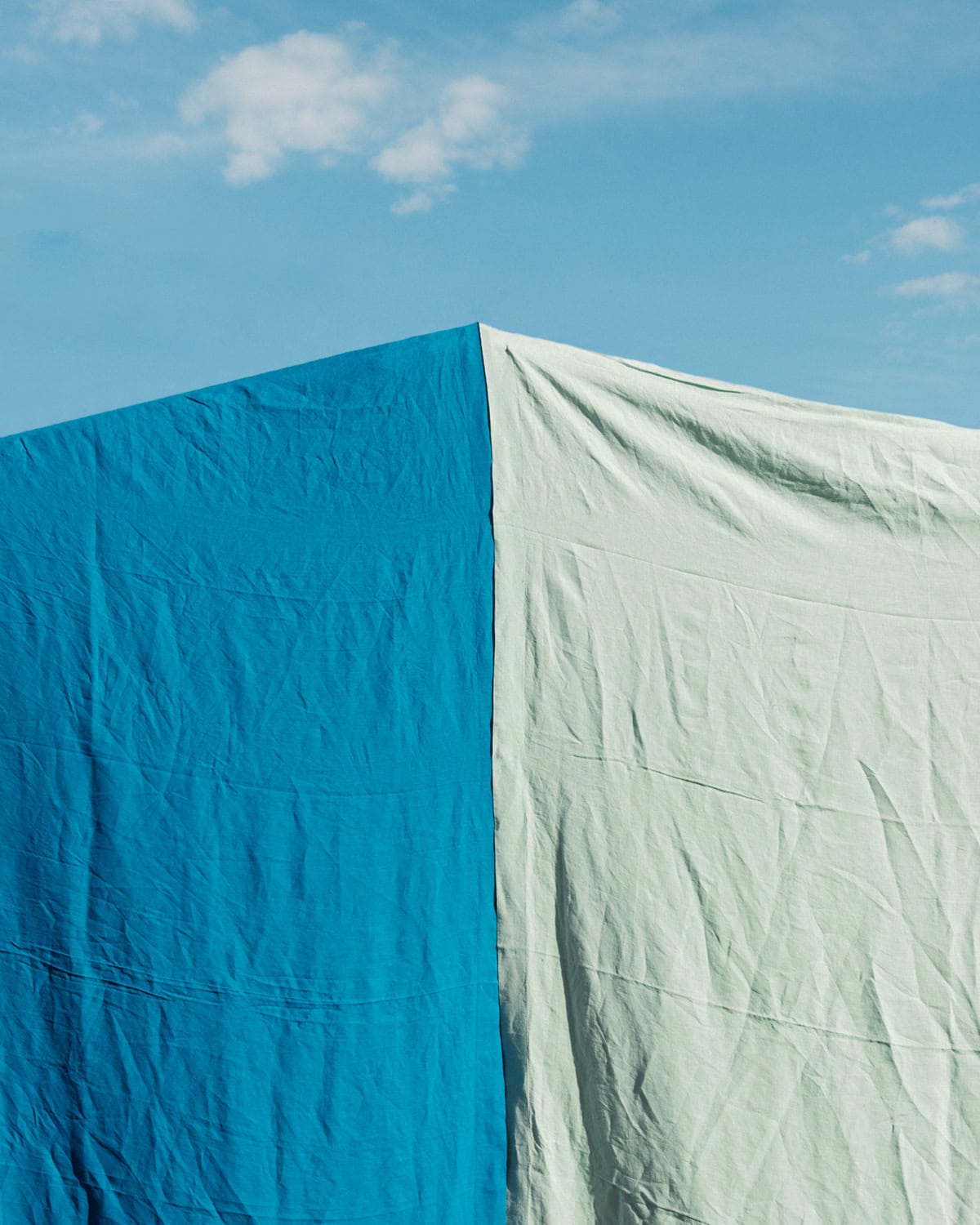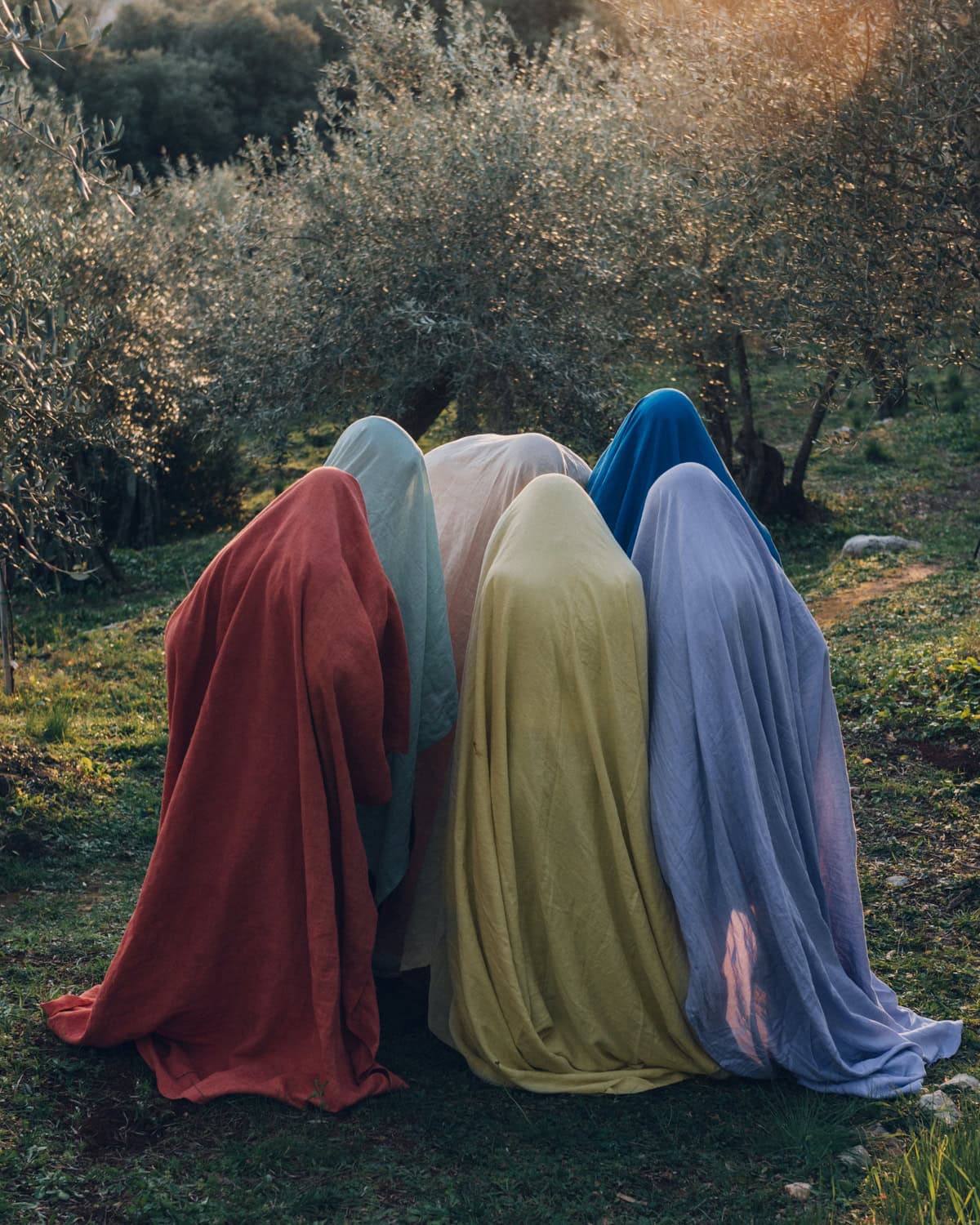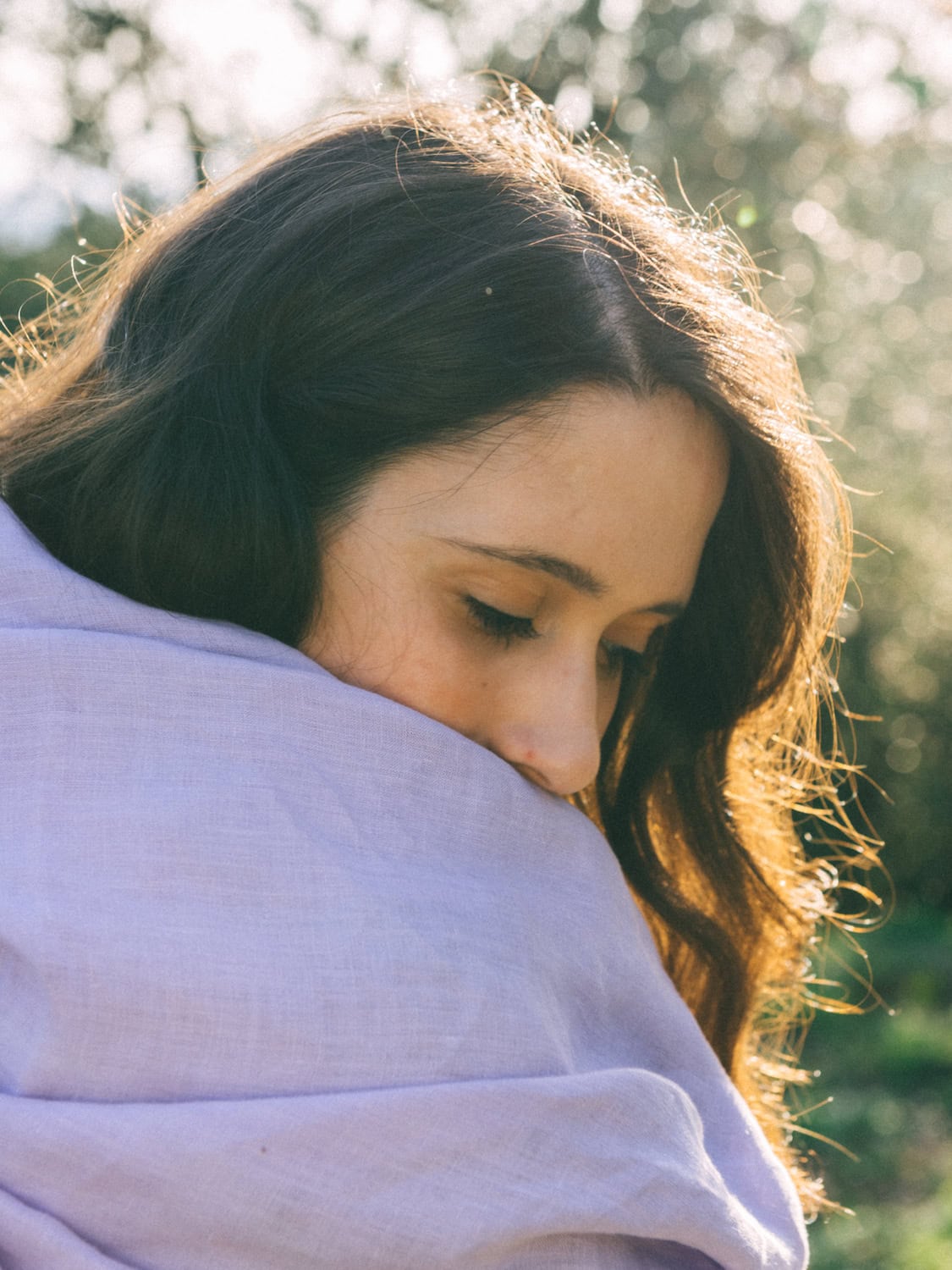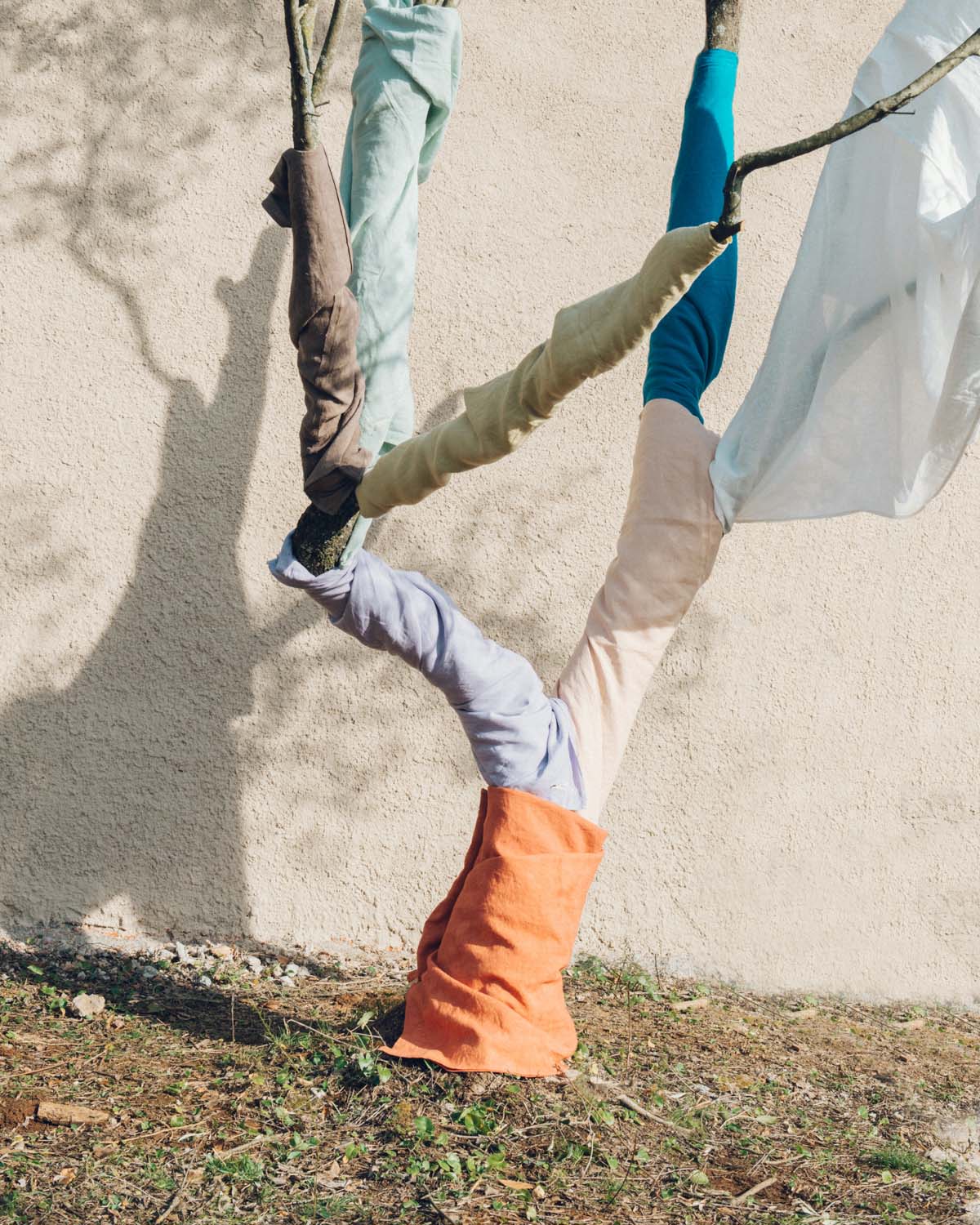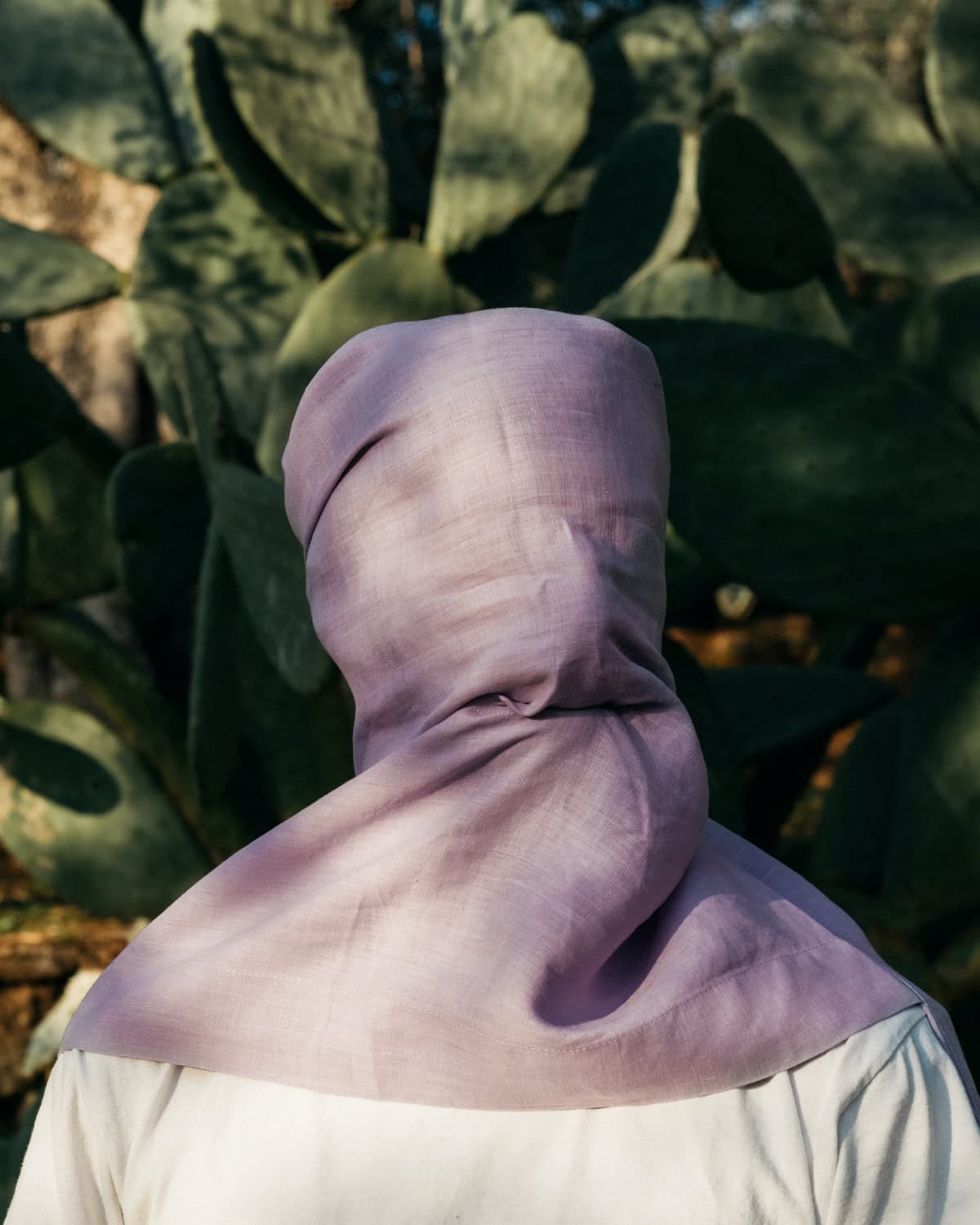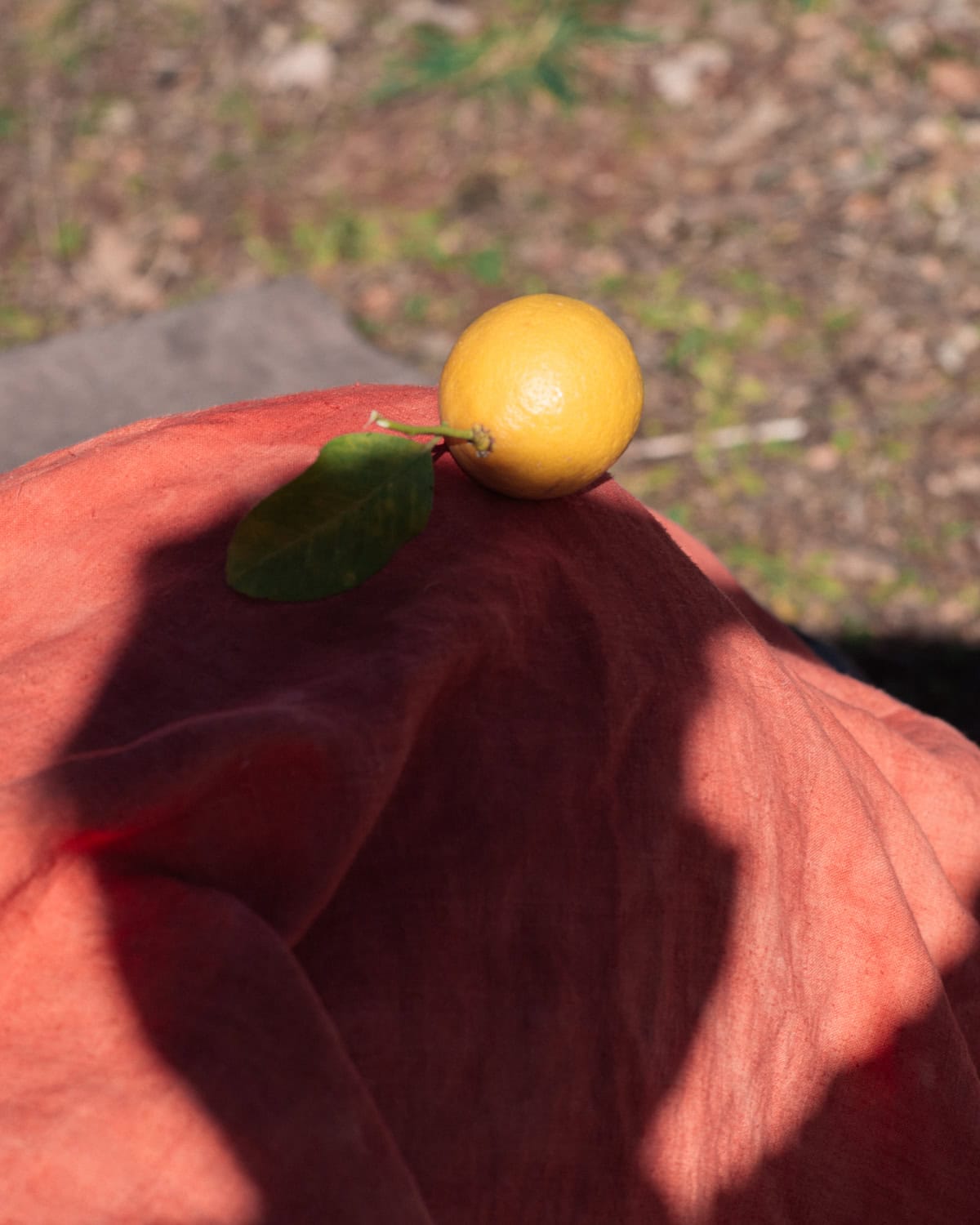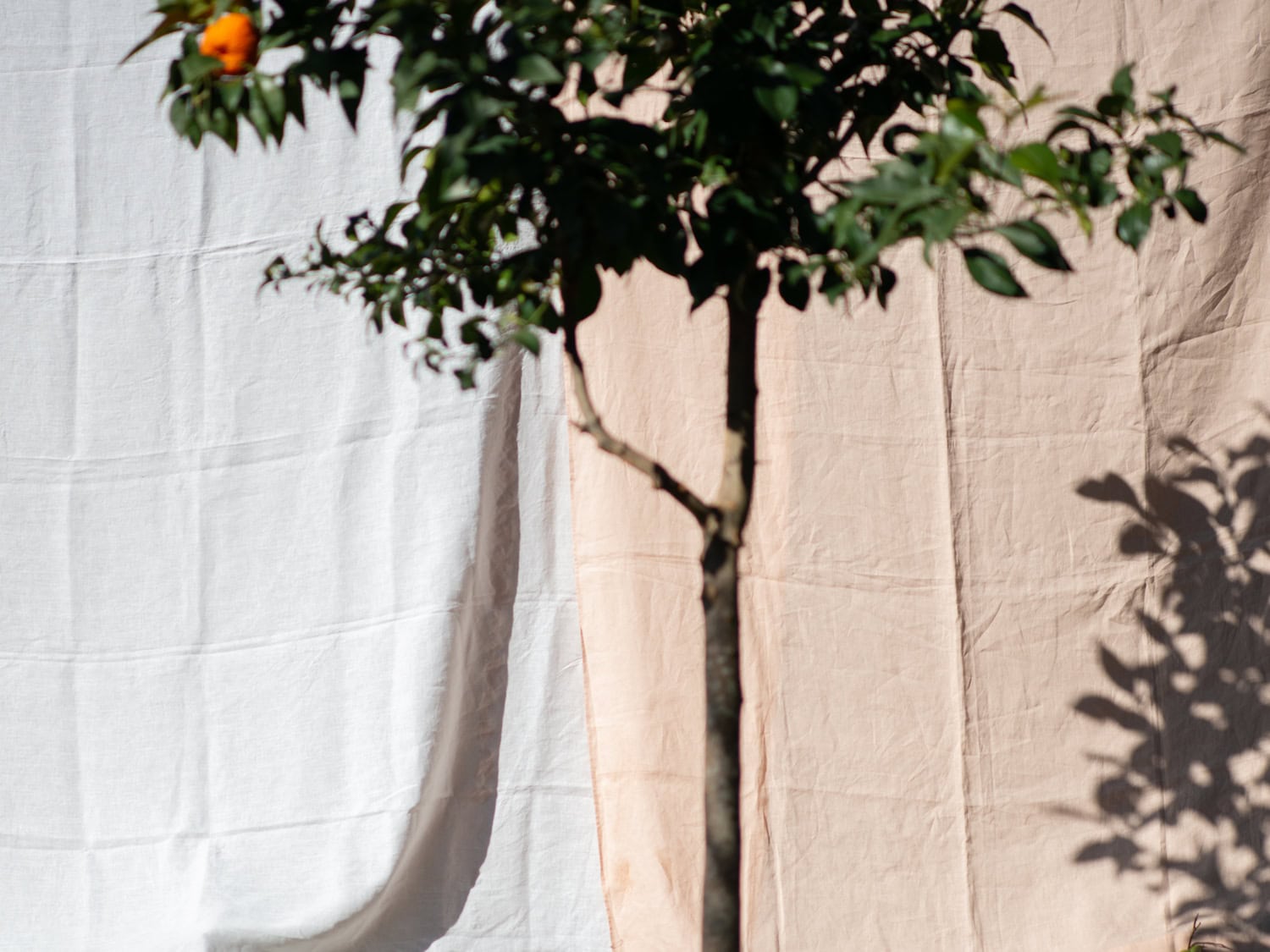The warm and pleasant feeling of “an embrace” is what the Florentine photographer Iacopo Pasqui (1984) felt as soon as he entered La Stellata’s magnificent garden. The impression of sincere hospitality is probably the idea that describes in the most trustworthy and direct way this place, nestled in the hills of Versilia and enriched by the shimmering waves in the distance. The last edition of the artistic residency that takes place in La Stellata, family-run farm, and whose results will then be displayed at LABottega, a “rural retreat” combining cultural, artistic and culinary experiments, featured Pasqui who, through his photographic sensibility, took pictures in the florid scenery of La Stellata of the products of Casa Parini, a Piedmontese hemp bedding brand founded by Viola Stancati in 2021. The collaboration between Sara del Soldato—who, together with her family, runs these two spaces in Pietrasanta—and Viola Stancati allowed the photographer to apply his research, which has always explored the complex relationship between human and nature, to the attention of the two toward ethic and social sustainability, which is shown, on one hand, with great respect and care toward the land; and, on the other, with transparency and a sustainable production—the social foresight of Casa Parini’s products is clear in their creation process; in fact, the bedding is made by the specialized seamstresses of the social enterprise Colori Vivi, who work alongside migrant women who are taught the craft so as to help them become self-reliant and independent.
Pasqui decodes this twine of aims starting from the human figure, maker and recipient of these extremely well-finished sheets. Thanks to this juxtaposition, the photographer reiterates the objects’ function, but at the same time he expands it, recalling that private world that revolves around this type of bedding. The sheets become witnesses of feelings and emotions: they stop being mere objects and become a place, a free zone made of tenderness and closeness. This emotional proximity acquires a profile thanks to the people hidden under the bed sheets: the blunted and mysterious silhouettes don’t have one recognizable face. Identity is surpassed to make room for a type of recognition that is emotional, a type of understanding, or shared memory, that doesn’t need distinguishing features. The photographs’ formal composure conceals the landscape’s invisible bustle, where each creature and element follow their innate path. To immediately see all those lives is impossible; however, Pasqui helps us showing the serene and harmonious closeness of the colorful presences: a metaphor that recalls the already existing environmental coexistence, in which we are called to play our part. The visual dialogue that Pasqui establishes with La Stellasta’s space and Casa Parini’s bed sheets reveals his attention to the treatment of light: it is so present and significant that it assumes the outlines of one of the inhabitants of this garden, becoming in this way a comforting presence.
The sheets’ soft surfaces—delicate enough to look like breezes of colorful air—are polished by this gentle light. Thanks to it, the tenuous pastel colors express all their poetic potential. In Pasqui’s photographs, La Stellata is not just a background, or an artificial scenario, but it is also a subtle and quiet protagonist. Each level of its identity had a part in his project: firstly, it is the space from which the photographer captured the most diverse emotions and suggestions; also, its naturalness puts it in contact with the creations of Casa Parini; lastly, Pasqui’s Tuscan origin resonated with the atmosphere of La Stellata. This joint call allowed him to exercise and let his most genuine authorship emerge.
The instances that were captured by Pasqui’s lenses are intimately supported by the affection for their history—these are places and objects between the physical and the inner, rooted in their past and projected into the future. On the one hand, Serena del Soldato’s dedication pushed her to make La Stellata and LABottega suitable spaces for the creation of synergies and new inner views, while maintaining the values of friendliness and openness that have been distinctive features of these places since 1920. On the other, Viola Stancati’s vision led her to transform the building at Via Giuseppe Parini 9 in Turin in her brand’s headquarter. In the 1970s, the building hosted the company founded by her grandfather, where workwear and military uniforms were made: two generations united by respect and care for textiles.
Even though condensing the countless private and public, apparent and hidden characteristics of Casa Parini and La Stellata in a few images was not an easy task, Iacopo Pasqui succeeds in this endeavor by portraying their identity, enhancing it through his photographic eye. From the 20th of May, 2023, Pasqui’s photographs will be exhibited at LABottega’s spaces: it will be possible to merge in these suspended and gentle moments, captured by the photographer, where the human figure harmoniously blends with olive and prickly pear trees, and the soft sounds of animal footsteps.
